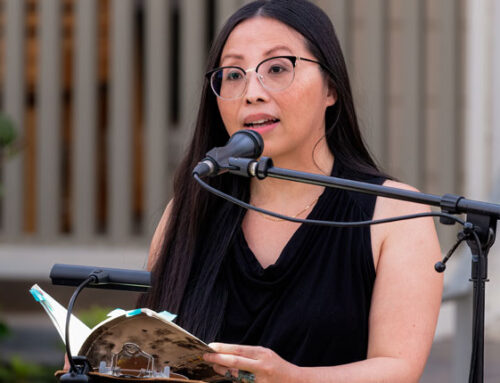Reports of black widow spiders found in supermarket table grapes in New Zealand and Massachusetts have prompted a Fresno State researcher to take another look at vineyard control measures for the ominous pest.
Black widows pose no threat to grape production; their typical diet is insects, not leaves or fruit. However, when products such as table grapes reach a store shelf with a black widow hiding in the cluster, alarm bells go off everywhere, said Fresno State plant science professor Dr. Andrew Lawson in explaining recent research on methods to control black widows in table grape vines.
“The movement of any black widow from the vineyard to the market place presents an immediate concern to the table grape industry,” Lawson said.
In 2001, for example, New Zealand banned imports of California table grapes after four black widows were found in table grape bunches. In the Eastern U.S., three black widow findings in California table grape bunches were reported from Shaw’s supermarkets in the Boston area. Such discoveries can cause consumers to scatter and product demand to evaporate.
Researchers suspected that new, less toxic formulas of miticides and insecticides, used to control common vineyard pests such as mites, leafhoppers and mealybugs, can leave black widows unscathed. Lawson’s work appears to confirm that.
His project began with three objectives. One was to test the efficacy of chemical control products in the field and laboratory. The second was to scientifically document population densities and specific vine locations of black widows in San Joaquin Valley vineyards. The third was to examine black widow spiderling mortality, dispersion and development throughout the growing season.
Of seven currently-used pesticides tested, only three – Lannate (methomyl), Lorsban (chlorpyrifos) and Danitol (fenpropathrin) – provided 100 percent control of adult male and female black widows by direct exposure, Lawson reported. Lorsban also provided control of adult females when the spiders were exposed to treated vine bark.
A key cooperator in the study was Kent Daane, a biological pest control specialist for the University of California Cooperative Extension (UCCE), based in Parlier, California. Lawson and Daane collaborated in the research, and Daane will serve a major role in making control recommendations through his contacts with the table grape industry.
Monitoring recommendations include the following: Approximately 1,000 vines per vineyard block should be examined for black widow webs by walking five to 10 rows.
“Before any treatments, we recommend destroying nests to determine the efficacy of treatments,” Lawson stated. “If the treatment is effective, nests should not be rebuilt following treatment.”
This research was sponsored by the California State University Agricultural Research Initiative with additional support from the California Table Grape Commission.
For more information, contact Lawson at alawson@csufresno.edu or Daane at daane@uckac.edu.
(Copy by Steve Olson of the California Agricultural Technology Institute at California State University, Fresno.)




